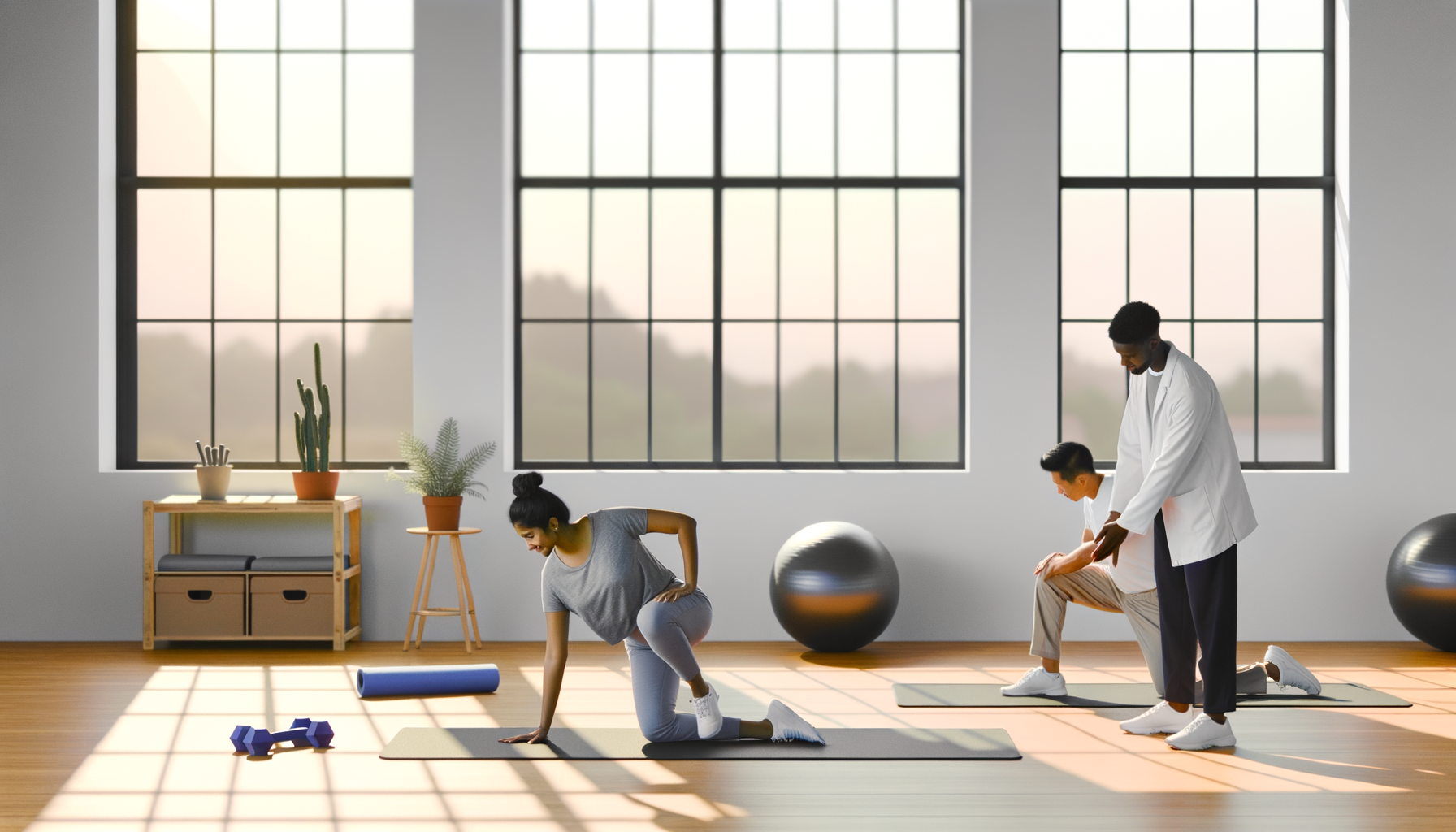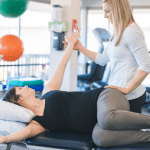Pelvic Health Importance
Pelvic health is a critical aspect of overall well-being, yet it is often overlooked or misunderstood. The pelvic region houses a complex network of muscles, ligaments, and organs that play pivotal roles in bodily functions such as urinary and fecal continence, sexual health, and core stability. Common conditions associated with pelvic floor muscle dysfunction include urinary and fecal incontinence, pelvic organ prolapse, and chronic pelvic pain. These conditions can significantly impact quality of life, leading to social embarrassment, sexual dysfunction, and psychological distress. Understanding the importance of pelvic health is the first step towards prevention, effective management, and treatment of these conditions.
Beyond the Pelvic Floor: A Holistic View
While the pelvic floor muscles are integral to pelvic health, they do not work in isolation. A holistic view of pelvic health recognizes the interconnectedness of the pelvic floor with other muscle groups, including the hip flexors, adductors, and the muscles of the lower back. These muscle groups work synergistically to support pelvic organs and maintain continence. For instance, tight hip flexors can contribute to pelvic floor dysfunction by altering pelvic alignment, which in turn affects the tension and function of the pelvic floor muscles. Similarly, weak or overactive adductors can impact pelvic stability and organ support. Therefore, a comprehensive approach to pelvic health must consider the broader musculoskeletal context.
Purpose of the Article
The purpose of this article is to shed light on the often-neglected role of muscles beyond the pelvic floor that contribute to pelvic health. By exploring the anatomy and function of these muscles, we aim to broaden the understanding of pelvic health and highlight the importance of a comprehensive approach to diagnosis and treatment. This article will serve as an informative resource for healthcare professionals, patients, and anyone interested in learning about the complexities of pelvic health. Ultimately, we strive to empower individuals with knowledge that can lead to improved health outcomes and quality of life.
Anatomy of the Pelvic Region
Pelvic Bone Structure
The pelvic region is a complex structure that plays a critical role in supporting the body’s weight and maintaining pelvic health. The pelvic girdle consists of several bones: the ilium, ischium, pubis, sacrum, and coccyx. The ilium is the largest of the pelvic bones and is what we feel when we place our hands on our hips. The ischium, or sit bones, is where we bear weight when sitting. The pubis is the anterior part of the pelvis, joining both sides together via the pubic symphysis. The sacrum connects to the ilium via the sacroiliac (SI) joint, and the coccyx, or tailbone, attaches to the lower part of the sacrum. These bones form a basin-like structure that provides attachment points for muscles and ligaments and houses and protects the pelvic organs.
Muscles Beyond the Pelvic Floor
While the pelvic floor muscles are essential for pelvic health, several other muscles contribute to the stability and function of the pelvic region. These include the hip flexors, particularly the iliopsoas, which is comprised of the psoas and iliacus muscles. The psoas originates from the lumbar vertebrae and attaches to the femur, playing a role in hip flexion, trunk balance in sitting, and trunk side-bend. The iliacus, originating from the ilium’s inner surface, also attaches to the femur and assists in hip flexion and stabilization of the hip joint.
Other significant muscles include the adductors of the inner thigh, which span from the pubis to the femur and are involved in bringing the thigh inward towards the other thigh, as well as in hip flexion and extension. The hip external rotators, such as the piriformis and obturator internus, also play a role in pelvic health. These muscles help externally rotate the thigh and are located deep in the buttocks and within the pelvis, respectively.
Interconnectedness of Pelvic Muscles
The muscles of the pelvic region do not work in isolation; rather, they are highly interconnected, working in concert to provide support, stability, and movement. The hip flexors, adductors, and external rotators all have implications for pelvic alignment and function. For instance, tightness in the hip flexors can lead to anterior pelvic tilting, which can affect the lower back and overall posture. Similarly, the adductors can compensate for pelvic floor weakness, highlighting the importance of considering the entire muscular network when addressing pelvic health.
Understanding the anatomy of the pelvic region, including the bone structure and the muscles beyond the pelvic floor, is crucial for a comprehensive approach to pelvic health. By recognizing the interconnectedness of these muscles, healthcare providers can better assess and treat various conditions that affect pelvic health.
Hip Flexors and Pelvic Health
Role of the Iliopsoas in Pelvic Alignment
The iliopsoas, comprising the psoas and iliacus muscles, is a primary hip flexor that plays a significant role in maintaining pelvic alignment. The psoas originates from the lumbar vertebrae and attaches to the femur, while the iliacus arises from the iliac fossa of the pelvis and joins the psoas at the femur. Together, these muscles are responsible for hip flexion, stabilizing the hip joint, and balancing the trunk in a sitting position. When the iliopsoas is functioning optimally, it contributes to a neutral pelvic tilt, which is crucial for pelvic health.
Impact of Tight Hip Flexors
Tight hip flexors can lead to a cascade of issues affecting pelvic health. The iliopsoas muscles can become shortened due to prolonged sitting or repetitive activities like running or cycling. This shortening can cause an anterior pelvic tilt, where the front of the pelvis drops and the back rises. This altered posture can increase the curve of the lower back (lordosis), leading to abdominal, anterior hip, groin, and low back pain. Furthermore, tight hip flexors can contribute to muscle imbalances, affecting the stability and function of the pelvic floor.
Myofascial Trigger Points and Associated Pain
Myofascial trigger points (MTrPs) in the iliopsoas can also contribute to pelvic pain and dysfunction. MTrPs are sensitive spots in the muscle that can cause referred pain and tightness. When present in the iliopsoas, they can lead to pain that radiates to the abdomen, anterior hip, groin, and even the lower back. These trigger points can be a result of muscle overuse, injury, or postural imbalances. Addressing MTrPs through manual therapy, stretching, and strengthening exercises can help alleviate associated pain and restore proper muscle function, thereby improving pelvic health.
Inner Thigh Muscles: Adductors
Adductor Muscle Anatomy and Function
The inner thigh is home to a group of muscles known as the adductors. These muscles, which include the adductor brevis, longus, and magnus, span from the pubis to the femur. Their primary action is hip adduction, drawing the thigh inward towards the midline of the body. They also play a role in hip flexion and extension. The adductors are essential for movements such as crossing the legs, stabilizing the pelvis while walking, and contributing to other lower limb movements.
Connection to Urinary Urgency and Incontinence
Interestingly, the adductor muscles have a connection to urinary urgency and incontinence. When the pelvic floor muscles are weak or compromised, the adductors may contract in an attempt to compensate for this weakness. This compensation, however, is often ineffective and can lead to increased urinary urgency. Additionally, myofascial trigger points in the adductor muscles can refer pain to the upper inner thigh and contribute to sensations of groin pain, which may be mistaken for pelvic floor discomfort.
Compensation for Pelvic Floor Weakness
When the pelvic floor muscles are not functioning optimally, the body may recruit the adductor muscles as a form of compensation. This is the body’s attempt to maintain pelvic stability and continence. However, this compensation can lead to overactivity or tightness in the adductors, which can exacerbate pelvic floor dysfunction. It is crucial to address both the strength and flexibility of the adductors in conjunction with pelvic floor rehabilitation to ensure a comprehensive approach to pelvic health.
In summary, the adductor muscles of the inner thigh are integral to pelvic health. They work in concert with the pelvic floor muscles to provide stability and support to the pelvic organs. Understanding the anatomy and function of the adductors, their role in urinary function, and their relationship with the pelvic floor is essential for a holistic approach to treating pelvic floor disorders.
Hip External Rotators and Their Influence
Piriformis and Obturator Internus Muscles
The hip external rotators play a pivotal role in pelvic alignment and health. Among these, the piriformis and obturator internus muscles are significant due to their anatomical positioning and functions. The piriformis originates from the sacrum and sacrotuberous ligament and inserts onto the femur. Located deep within the buttocks, beneath the gluteal muscles, it is responsible for externally rotating the thigh and abducting the flexed thigh. The obturator internus, with attachments from the pubis and ischium to the femur, shares similar actions in thigh external rotation and abduction when the thigh is flexed.
Symptoms of Tightness and Trigger Points
Tightness in the piriformis muscle can be associated with sciatica, as the sciatic nerve often runs in close proximity or even through the muscle in some individuals. Myofascial trigger points within the piriformis can lead to referred pain in the mid to upper buttock area and the pelvis. Similarly, tightness or trigger points in the obturator internus can cause referred pain into the coccyx, tailbone, and deep pelvic regions. These symptoms can be exacerbated by prolonged sitting, certain physical activities, or even stress, which can further tighten these muscles.
Observing External Rotator Tightness in Daily Life
One practical way to observe the tightness of hip external rotators in daily life is to examine the alignment of the legs and feet. A common manifestation of tight hip external rotators is the outward turning of the knees and/or toes, often referred to as “duck feet” posture. This can be observed when standing or walking and may indicate an imbalance in muscle tension that could contribute to pelvic health issues. Addressing such imbalances through targeted stretches, strengthening exercises, and myofascial release can help alleviate symptoms and improve overall pelvic function.
It is essential to recognize that the health of the pelvic region is not isolated to the pelvic floor muscles alone. The interconnectedness of the hip external rotators, such as the piriformis and obturator internus, with the pelvic floor highlights the importance of a comprehensive approach to pelvic health. By understanding the influence of these muscles and their potential to cause referred pain and tightness, individuals and healthcare providers can better address the complexities of pelvic health concerns.
The Role of Hamstrings in Pelvic Health
Hamstring Muscle Group and Actions
The hamstring muscle group, consisting of the biceps femoris, semimembranosus, and semitendinosus, plays a crucial role in pelvic health. These muscles originate from the ischial tuberosity in the pelvis and insert on the bones of the lower leg. Their primary actions include hip extension, which moves the thigh backward, and knee flexion, which bends the knee. The hamstrings also contribute to the external rotation of the knee when the hip is extended. The proper functioning of these muscles is essential for maintaining pelvic stability and alignment.
Effects of Hamstring Tightness on Pelvic Tilt
Hamstring tightness can significantly impact the position of the pelvis, often leading to a posterior pelvic tilt. This tilt occurs when the front of the pelvis rises and the back of the pelvis drops. Tight hamstrings can limit the anterior tilt of the pelvis during forward bending movements, which may increase the strain on the lower back. This altered pelvic position can contribute to various musculoskeletal issues, including lower back pain and a reduced range of motion in the hips and lumbar spine. It is crucial to address hamstring tightness to maintain a neutral pelvic position and prevent compensatory patterns that could lead to dysfunction.
Referred Pain from Hamstring Trigger Points
Myofascial trigger points in the hamstrings can lead to referred pain, which is pain perceived in areas other than where the trigger points are located. These trigger points can cause sensations of discomfort or aching that radiate up into the buttocks and down the leg, sometimes even reaching the area behind the knee. This referred pain can be mistaken for sciatica or other nerve-related conditions. Effective management of these trigger points through therapeutic interventions like manual therapy, stretching, and strengthening exercises can help alleviate the referred pain and improve overall pelvic health.
Comprehensive Approach to Pelvic Health
Addressing hamstring tightness is an integral part of a comprehensive approach to pelvic health. Pelvic floor therapists often assess and treat the hamstrings in conjunction with the pelvic floor muscles to optimize pelvic function. It is essential to evaluate posture and pelvic alignment to identify any muscle imbalances that may contribute to pelvic floor dysfunction. By incorporating a holistic treatment plan that includes the hamstrings, individuals can achieve better pelvic health outcomes.

Comprehensive Approach to Pelvic Health
Assessment and Treatment by Pelvic Floor Therapists
Pelvic floor dysfunction encompasses a broad spectrum of symptoms and conditions that can significantly impact an individual’s quality of life. Pelvic floor therapists play a crucial role in the assessment and management of these conditions. They employ a variety of diagnostic tools, including visual inspection, digital palpation, and specialized tests like urodynamics, anorectal manometry, and electromyography, to evaluate the function of the pelvic floor muscles and associated structures.
Therapeutic interventions are tailored to the specific needs of the patient, often requiring a multidisciplinary approach. Treatment may include lifestyle modifications, medications, manipulation techniques such as patient splinting and pessaries, biofeedback, physical therapy, and invasive procedures like botulinum toxin injections for overactive bladder. The goal is to improve symptoms of pelvic floor dysfunction, such as urinary incontinence, fecal incontinence, and pelvic pain, and enhance the patient’s quality of life.
Importance of Posture and Pelvic Alignment
Posture and pelvic alignment are critical components of pelvic health. Poor posture and skeletal asymmetry can contribute to pelvic muscular pain and exacerbate symptoms of pelvic floor dysfunction. Pelvic floor therapists assess posture and alignment as part of a comprehensive evaluation and provide guidance on corrective measures. Proper alignment helps in the optimal functioning of the pelvic muscles, supports continence, and contributes to sexual functions.
Addressing Muscle Imbalances
Muscle imbalances in the pelvic region can lead to a range of issues, including urinary urgency, incontinence, and chronic pelvic pain. A comprehensive approach to pelvic health involves identifying and addressing these imbalances through targeted exercises, stretches, and sometimes manual therapy. Pelvic floor therapists work to strengthen weak muscles and relax hypertonic muscles, aiming to restore balance and function. This may involve retraining the muscles to contract and relax appropriately, improving coordination, and enhancing the support of pelvic organs.
By addressing muscle imbalances, patients can experience relief from symptoms, improved pelvic organ support, and a reduction in the risk of developing further complications related to pelvic floor dysfunction.











